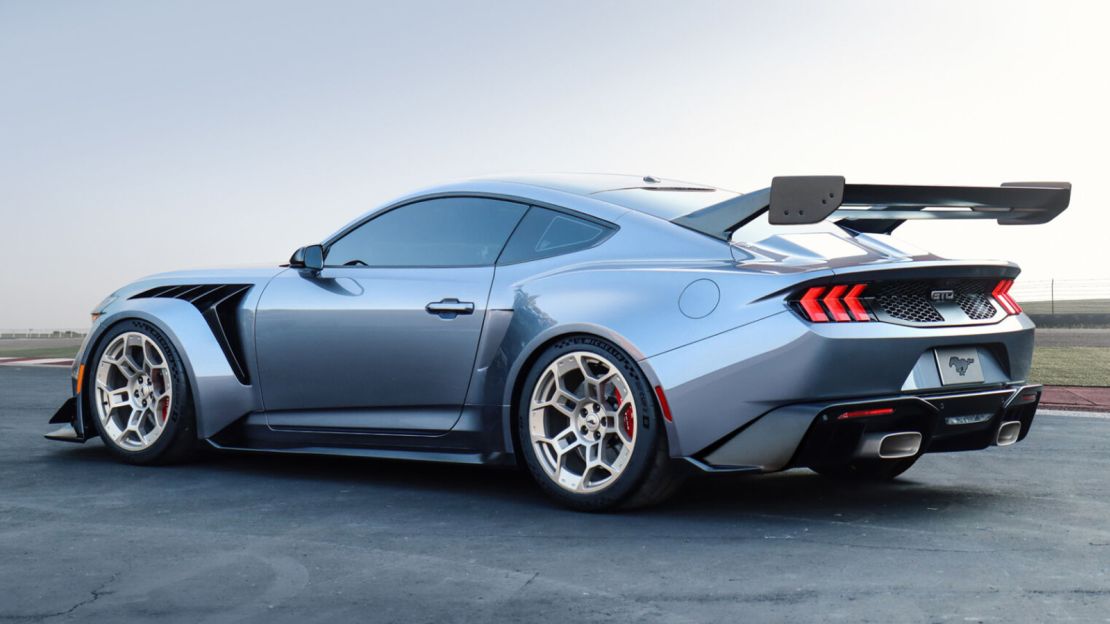Ford has just unveiled the 800-horsepower Ford Mustang GTD which will be available in late 2024 or early 2025 at a starting price around $300,000.
There’s much more in this Mustang, according to Ford (F), besides its powerful engine to account for its Lamborghini-level price. It’s modeled on the Mustang GT3 racing car that’s set to be driven in international competition next year.
“We see it as kind of an underdog approach to take on Europe’s racing elite, not just with the race car, but we wanted to bring that race vehicle to the street,” said Jim Baumbick, Ford’s vice president for product development.
For some reason, Ford seems to have this long-standing need to prove itself worthy against European companies that make high-priced sports cars. It goes all the way back to that 1960s tiff that was the subject of the 2019 film “Ford vs. Ferrari” and, apparently, Ford just isn’t ready to let it go.
“Ford vs. Ferrari” recounted the 1960s Le Mans races won by the Ford GT40 race car which was developed specifically to spite the Italian automaker after Ford couldn’t buy the company. In the 2000s, Ford has produced two modern versions of the Ford GT that have both become highly collectible. A new Ford GT won its class at Le Mans in 2016.
This time, Ford maintained the Mustang’s traditional design, with a supercharged 5.2-liter V8 engine up front under the hood, not behind the seats as in the GT models. Ford is attempting to achieve similar levels of speed and handling, though. That required doing away with things that make an ordinary Mustang a practical car for daily use – such as a trunk, for example.
The Mustang GTD, while legal to drive on public roads, will not be making trips to the supermarket.

The Mustang GTD’s body is almost entirely carbon fiber and is replete with active aerodynamic features to help it grip the road at high speeds. An enormous wing is mounted off the sides of the back window. Unlike other Mustangs, this one has no back seats and no trunk, the idea being to use every ounce of weight and each cubic inch of space, as much as possible, for performance, said Baumbick.
The back seats were done away with simply to save weight. The space where a trunk would have been is used to house a special cooler for the gear box and machinery for the sophisticated adjustable suspension system.
A lot of mechanical and engineering design work was done to give the car the sort of perfect front-to-rear weight balance that’s ideal for cornering, said Baumbick. For instance, the car’s eight-speed gearbox is all the way in the back.
Each car will start production at the same Flat Rock, Michigan, factory at which all other two-door Mustangs are built. At some point, though, the partially finished cars will be taken to the production facilities of a company called Multimatic in Markham, Ontario, Canada. Multimatic is a specialist automotive company that also works on the Mustang GT3 race car.
Some things Ford has learned from the development of this car will be used in more mainstream products, Baumbick said.
“We’ve proven in the past many times that we take these types of vehicles to migrate technology, learnings and insight into our broader application for production as well,” he said.





